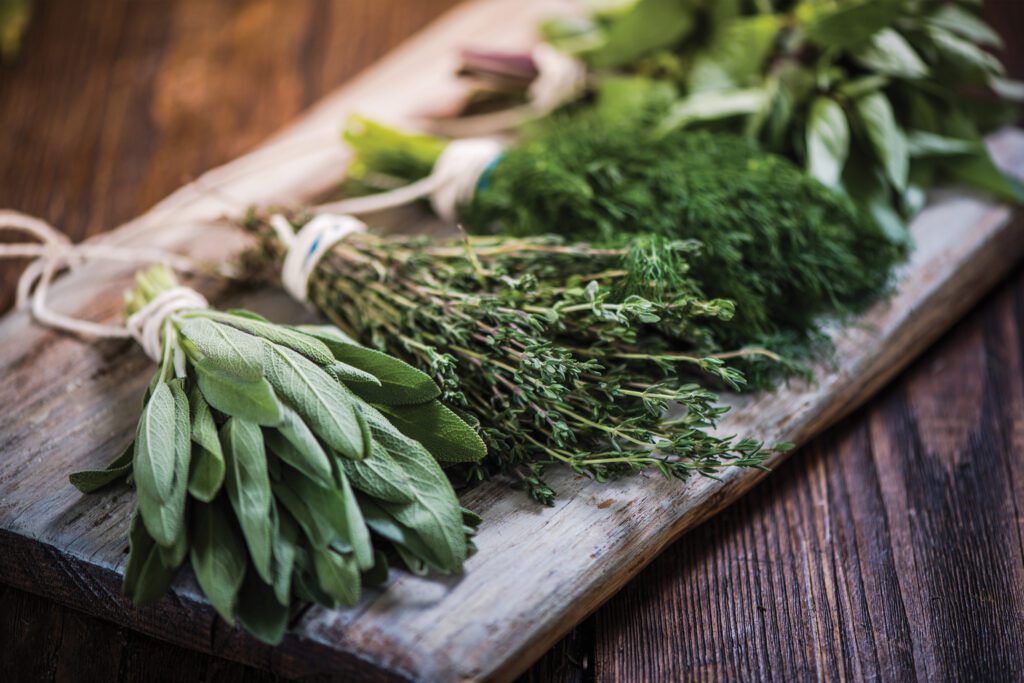Growing an Herb Garden
Ditch the salt, fatty sauces, and store-bought processed flavor purveyors. Instead, try seasoning your meals with herbs and spices that you can grow in your own home or yard! These healthy alternatives provide dense servings of nutrients, like vitamins and antioxidants, and they will produce far more for your money than options at the grocery store. So take the pressure off your wallet and your waistline with this simple switch, while simultaneously harnessing the myriad of health benefits that herbs and spices have to offer. Here are some tips and ideas to get you started:
Planting Tips
Avoid overcrowding.
If you’re planting multiple plants in one area of the yard or a shared container, make sure there is enough room for each plant’s root system and body to expand.
Know the soil type needed.
Each plant has unique needs for nutrients and drainage. It is important to research the appropriate type of soil that the plant requires.
Choose the right container.

Again, each plant may have different needs for drainage, space to spread, and other specifications. By researching ahead of time, you can choose a container that will ensure gardening success.
Growing Tips
Establish a watering schedule.
Improper watering can be detrimental to your herb garden, so set reminders to keep yourself on track. Some plants will need daily saturation, while others require dry periods and fast-draining conditions.
Ensure appropriate sunlight.
Just like watering, each plant will require different amounts of sunlight – some direct, others partial to full shade. As a rule of thumb, most herbs prefer a good amount of sun.
Determine proper pairings.
If planting any of your herbs together, confirm that they are compatible. First, they should prefer the same types of soil and sunlight and share similar watering schedules. Secondly, make sure one isn’t too aggressive to plant near another. Some herbs will “choke out” less dominant varieties.
Culinary Ideas for Common Herbs
Basil
Delicious in pasta, salads, soups, tea, juice, or water. A go-to herb for making pesto and adding to sandwiches.
Cilantro
Great for topping tacos, tamales, and wraps. Adds wonderful freshness to a green salad, chicken or tuna salad, or pasta salad.
Chives
A topper for scrambled eggs, steak, potatoes, fish, crostini with cream cheese, canapés, or any creamy sauce. Use it in salads or as a garnish for stir fry.
Oregano
Wonderful in Italian and Mexican dishes, mixed into eggs, sprinkled on a sandwich, or mixed into marinara sauce or soups.
Mint
Adds a refreshing flavor to teas, water, juices, and desserts. Mix into ice cream or steep in your water pitcher. Also works in various sauces, including those for lamb dishes.
Rosemary
Aromatic, unique, and often featured in breads and other baked goods. Great in pot roasts, chicken and fish dishes, pastas, and roasted potatoes.
By flavoring your food with these tasty plants, you can cut back or even eliminate other, less healthy flavor additions like butter, salt, and calorie-laden processed sauces. In addition to creating healthier dishes, you’ll achieve a sense of accomplishment by cultivating your own food.

